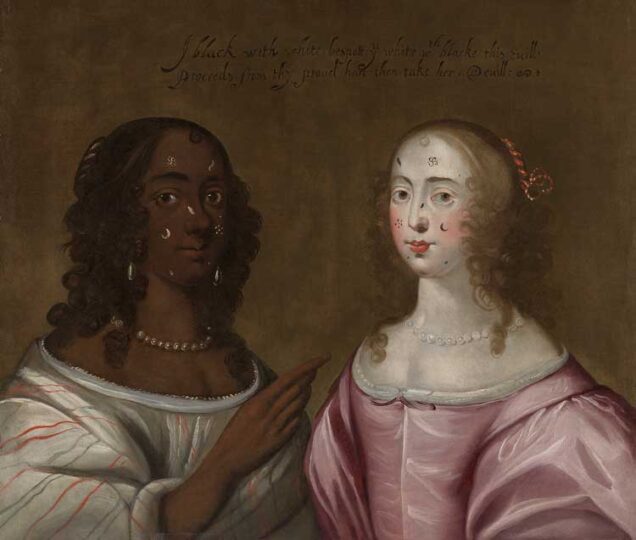4/2/25
Two Women Wearing Cosmetic Patches
Compton Verney, Warwickshire
21 November 2024 – November 2026
It may seem strange to want to “review” a single painting, but there is more than enough to say about this work to warrant it. It is a question of knowing where to begin.
Two Women Wearing Cosmetic Patches (c1655) depicts what it says it does: two women (one Black, one white), dressed and styled almost identically (even to the matching kiss curls), facing towards one another and the viewers. Oh, and wearing cosmetic patches, of course! In the 17th century, such patches comprised small pieces of (usually) silk, velvet, satin or leather, cut into a shape and glued on to the face with mastic. Circles were popular, but other shapes were also used – commonly stars or moons, as can be seen in this painting, along with some even more intricate spirals. The white woman, we can see, is not just wearing patches but also makeup. At the very least, she has on some blusher and lipstick, and probably also an underlayer of white face powder or paint. This, writes Janet Couloute in an essay for Art UK, was enough, before we even get on to the patches, to: “[fuel] patriarchal concerns about its ability to render white skin unreadable, masking women’s true nature. Women who wore cosmetics were castigated as degenerate and barbarous.”

But what makes this painting so unusual is the seeming equality between the two women, when one of them is Black. As Jane Simpkiss, a curator at Compton Verney, explains, in her essay accompanying the exhibition: “[T]he painting was made during the Protectorate of Oliver Cromwell, only a few years after English society had been turned upside-down with the execution of Charles I and abolition of the monarchy in 1649. […] Most paintings which include Black and white sitters in the 17th and 18th centuries make the inequality between the individuals stark.” Indeed, usually the white aristocratic sitter is the focal point of the painting, with the Black figure, most likely an attendant, portrayed smaller and often looking up into the face of their mistress. It is only recently that museums have begun referring to there being two sitters in portraits such as these, with historic titles usually referencing only the existence of the white sitter.
Read the full article here